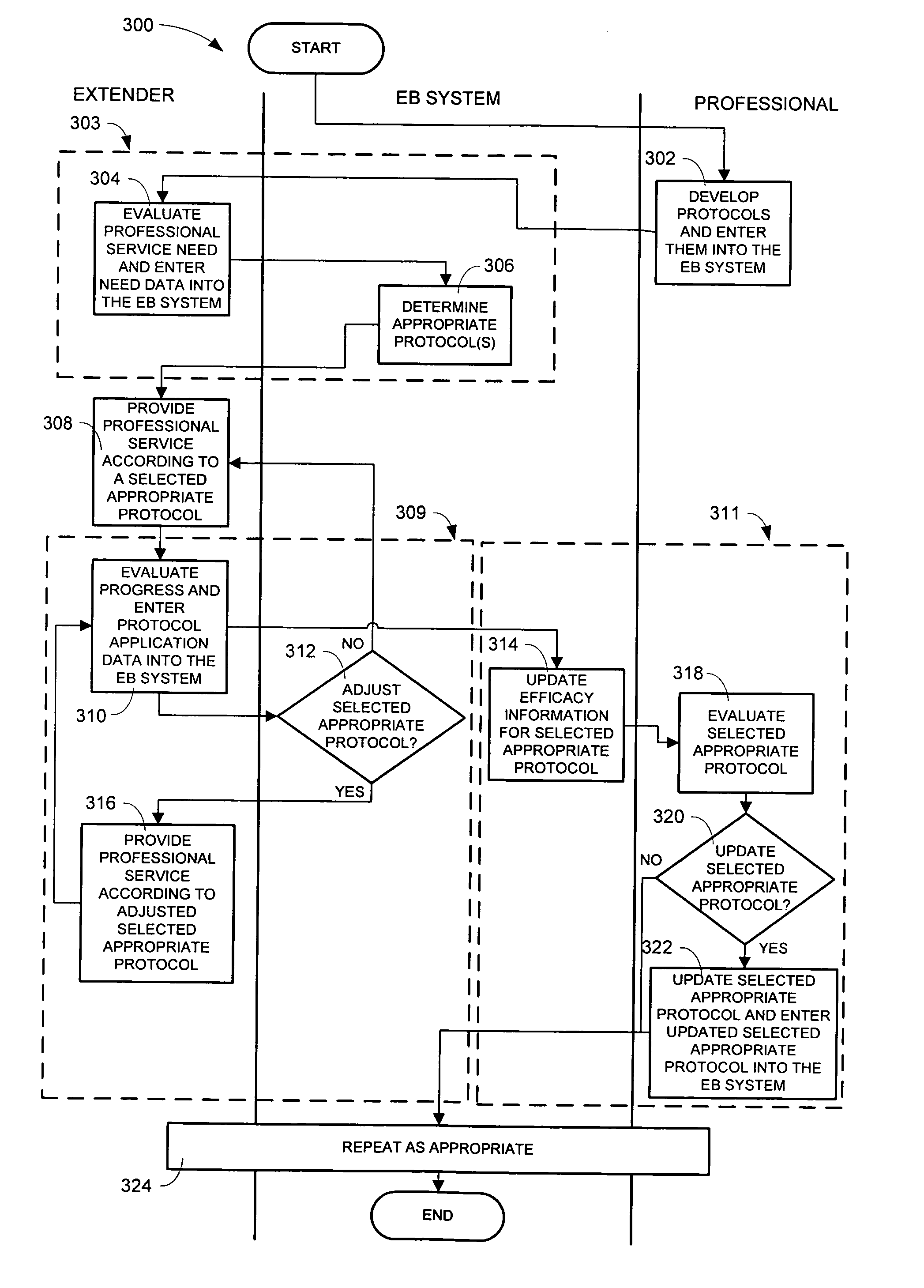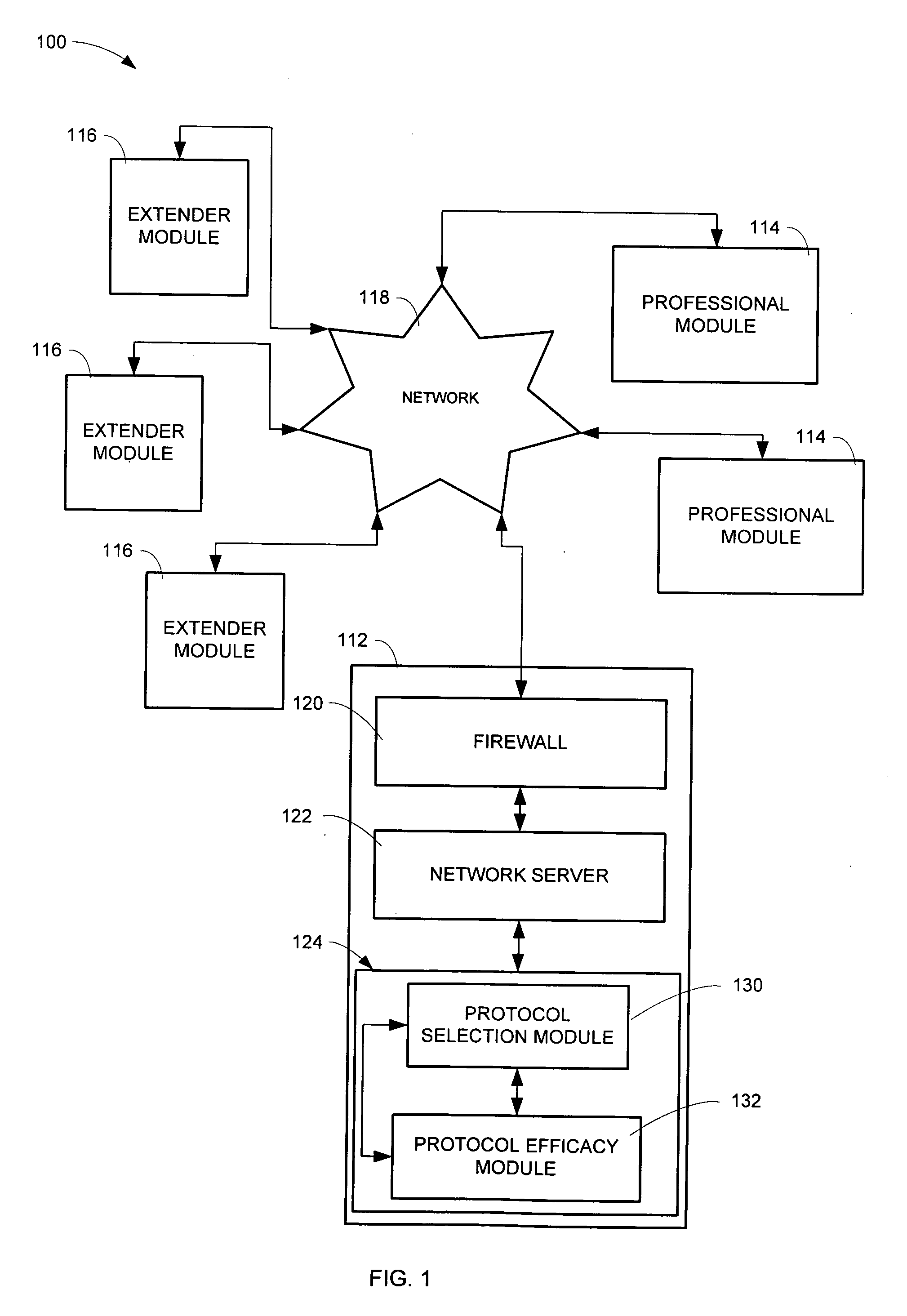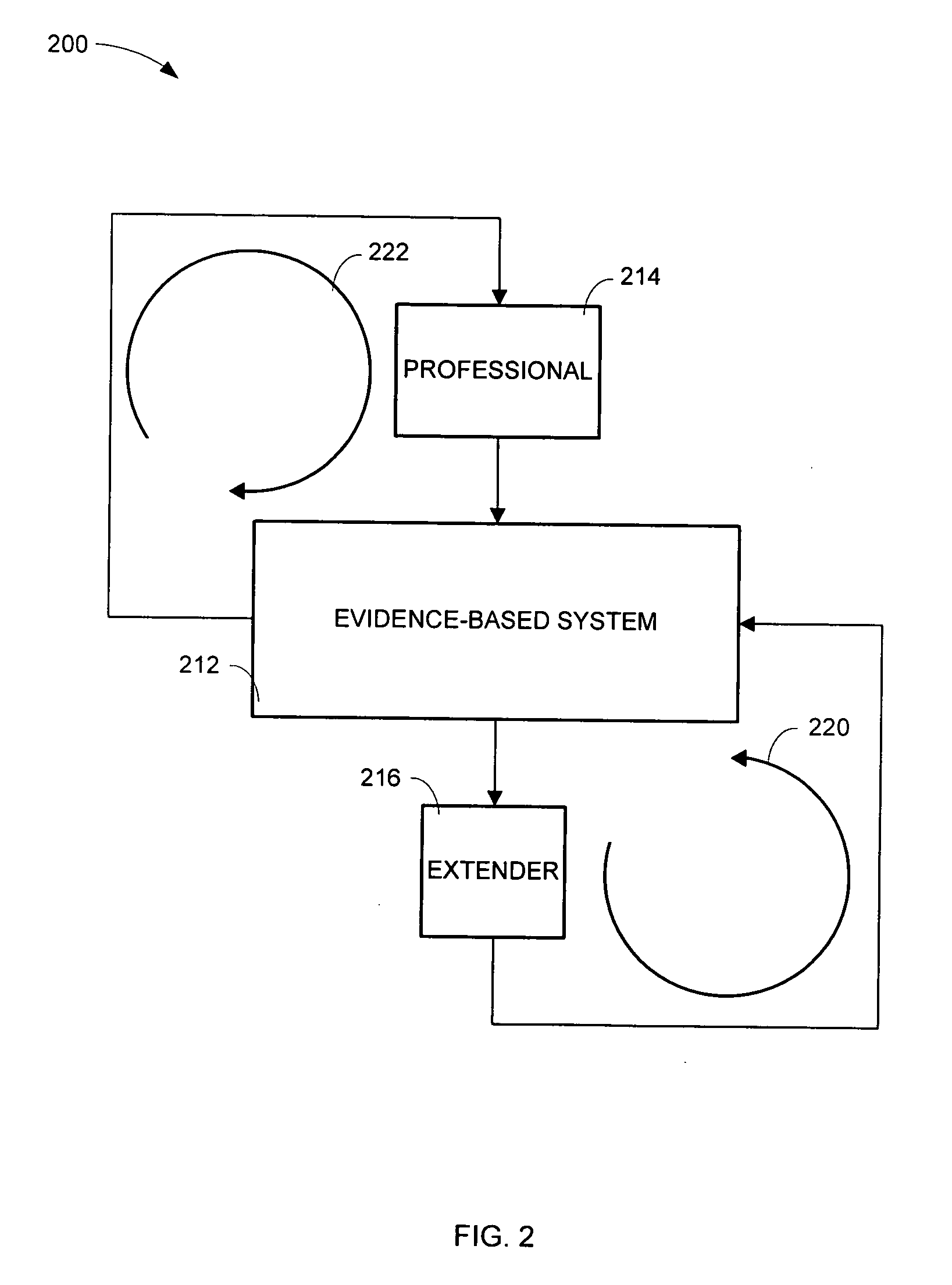Evidence-based extender system
a technology of extender system and evidence, which is applied in the field of evidence-based extender system, can solve the problems of serious disadvantages in the cost, availability, and service improvement of the system for providing professional services, and many individuals do not seek adequate professional services
- Summary
- Abstract
- Description
- Claims
- Application Information
AI Technical Summary
Benefits of technology
Problems solved by technology
Method used
Image
Examples
Embodiment Construction
[0025] The healthcare field is an excellent field in which to find solutions to the problem of efficiently providing professional services. One reason being that without question, one of the most pressing societal concerns is health. Health has become the new salvation for a generation dispossessed of philosophical and theological dogma. In addition, technology has drawn into sharper focus myriads of conditions and disorders that went unnoticed or were simply accepted even a few decades ago. The result is that modern societies are increasingly unwilling to accept gaps between the capability and the accessibility of healthcare services. With ever more attention focused on health, a growing market has been created, into which more and more money is being poured. However, growing markets are often rife with inefficient and inconsistent quality in the production or provision of services.
[0026] Evidence-based medicine (“EBM”) defines a useful model for improving the quality of healthcar...
PUM
 Login to View More
Login to View More Abstract
Description
Claims
Application Information
 Login to View More
Login to View More - R&D
- Intellectual Property
- Life Sciences
- Materials
- Tech Scout
- Unparalleled Data Quality
- Higher Quality Content
- 60% Fewer Hallucinations
Browse by: Latest US Patents, China's latest patents, Technical Efficacy Thesaurus, Application Domain, Technology Topic, Popular Technical Reports.
© 2025 PatSnap. All rights reserved.Legal|Privacy policy|Modern Slavery Act Transparency Statement|Sitemap|About US| Contact US: help@patsnap.com



